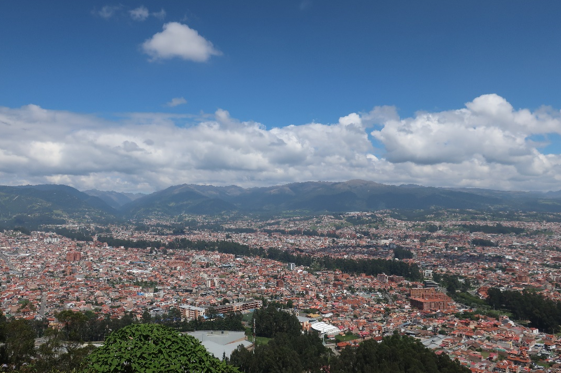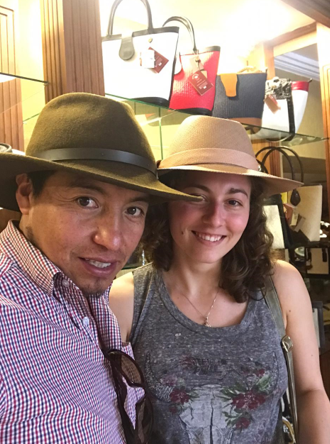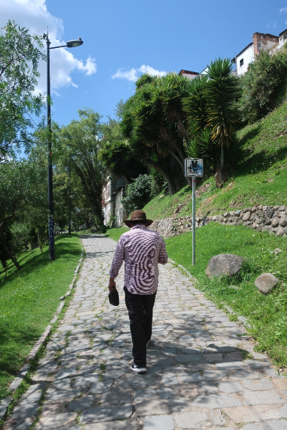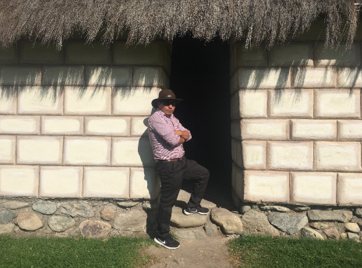After our relaxing day visiting Ingapirca, we continued travelling towards Cuenca. After dropping our things off at Nuestra Residencia, a charming and quiet hotel alongside the Tomebamba River, we headed to dinner in the city center. Here, we feasted on fresh shrimp, accompanied with rice and vegetables. The next morning, we woke early, had a delicious breakfast of scrambled eggs, with fresh fruit and bread, and left to take advantage of a sunny and perfect day in Cuenca. We started our day by driving to a high point overlooking all of Cuenca. Here our guide, Fernando Iza, pointed out some interesting things about the city, including the rich areas and some of the poorer areas, as well as the many rivers that travel through the city. We were soon able to spot them ourselves as the rivers are accompanied on both sides by tall lush trees.

Next, we travelled to the Museum of Homero Ortega, one of the first businesses that began selling the Panama Hat. We walked through the history of the company, and learned that the Panama Hat was, in fact, an Ecuadorian invention, but was dubbed the Panama Hat due to many laborers using them while working on the construction of the Panama Canal. We learned how these hats were prepared when the company first began, observing the ornate detailing that went into making these decadent hats, and we were also able to observe how the technology improved, with the company moving from using hand held irons to form the shape of the hat, to large heated presses. Finally, we went into the shop, and were able to try on some of the hats they have for sale. The owner was in the shop helping to organize the hats, and there was a very hands-on feeling about him. The shop assistant were lovely as well, helping to adjust the hats to fit on my head perfectly.

After our visit to the museum, we headed for the town center to enjoy lunch. After, we stopped at a café for coffee near Cuenca’s cathedral. Cuenca is known for its many grandiose churches, and this one does not disappoint either. With huge bright blue cupulas and gold interiors, this church is a must see. We meandered along Tomebamba River for an hour, as it was a beautiful and sunny day, and then drove to the Ruins of the Incan Castle of Pumapungo. This can be found in the backyard of Pumapungo Museum, and it is clear that these ruins and grounds are meticulously cared for. First walking through the ruins, it is possible to see the sleeping barracks, as well as an Incan constructed house. A little further, and you arrive at a full garden full of flowering plants, many of which Fernando knew from watching his grandmother cook with them as a child. Oregano, lemongrass, rosemary, mint, this garden was truly a tranquil place to spend the afternoon. The stroll ended at the entrance of the bird sanctuary, but unfortunately it was not open for visitors at the time.


We enjoyed our last dinner in Cuenca near the city center, at a restaurant called Goza. We slid in just before happy hour ended, and we were also able to enjoy fresh passionfruit cocktails. We stayed one more night in Nuestra Residencia and left early for Guayaquil.
I would highly recommend booking with Cotopaxi-Travel, as Fernando was able to show us everything worth seeing in Cuenca with an intimate knowledge of the city. Being accompanied by an experienced Ecuadorian national guide, Fernando Iza, made the experience amazing as he led us to the best of what there is to see in this town.
